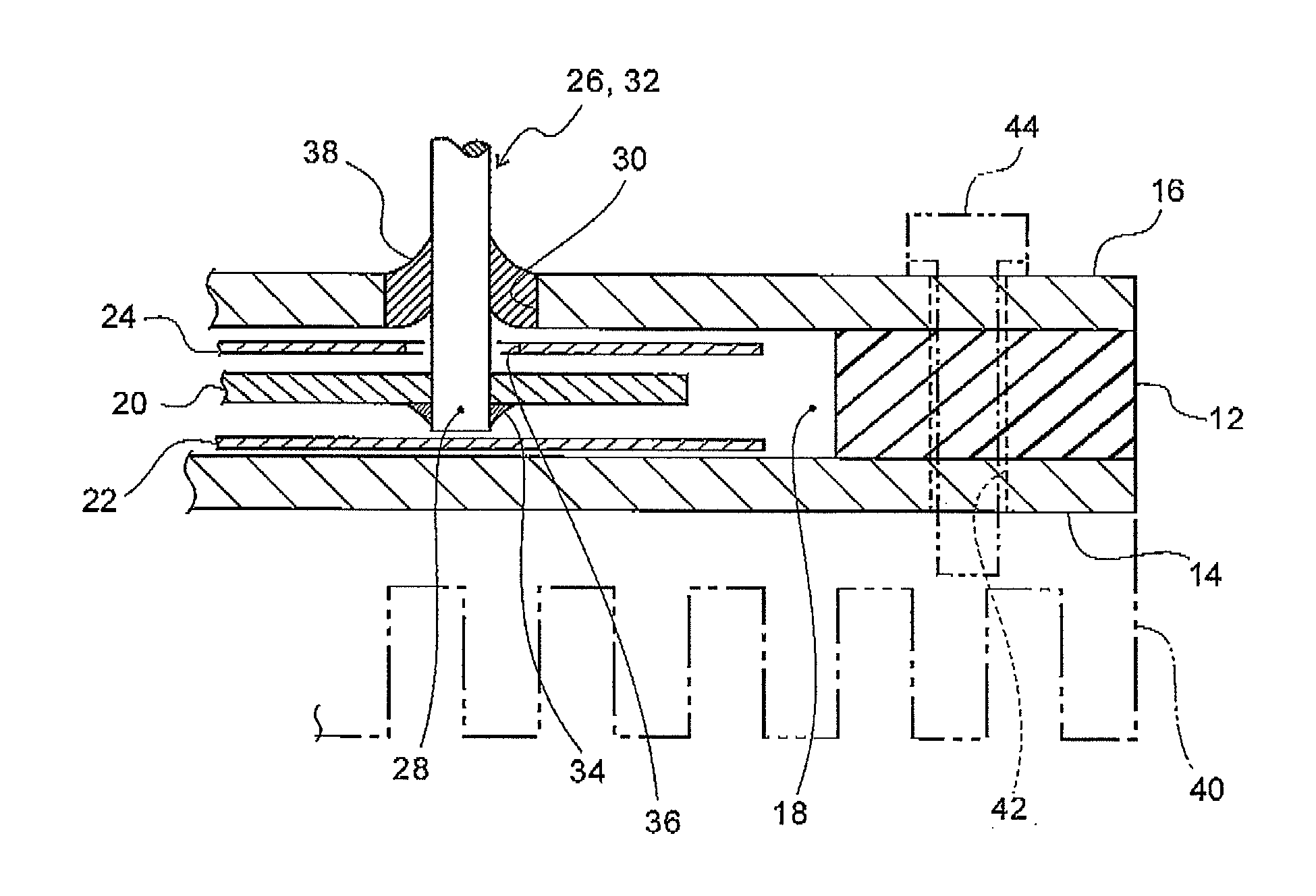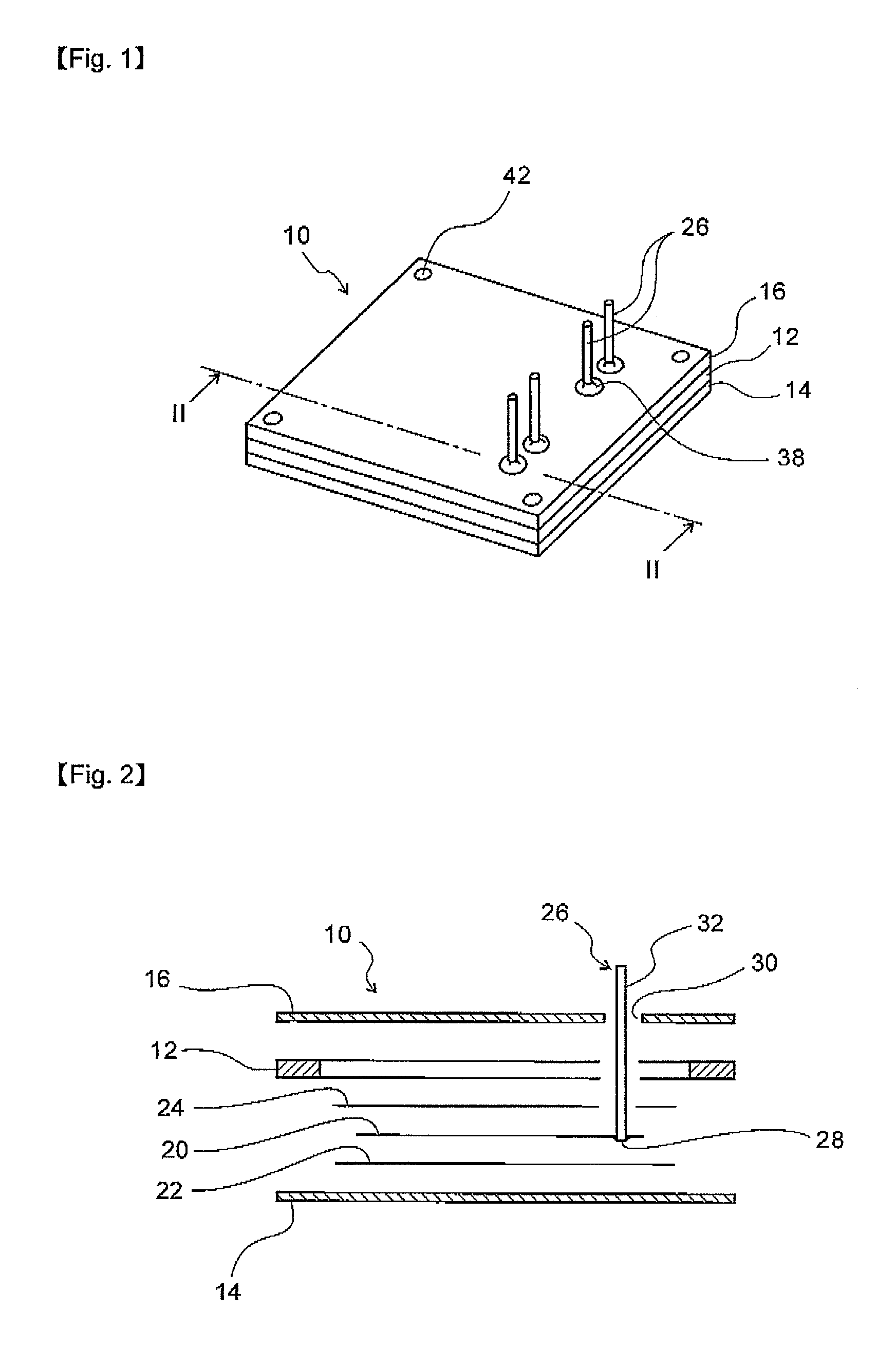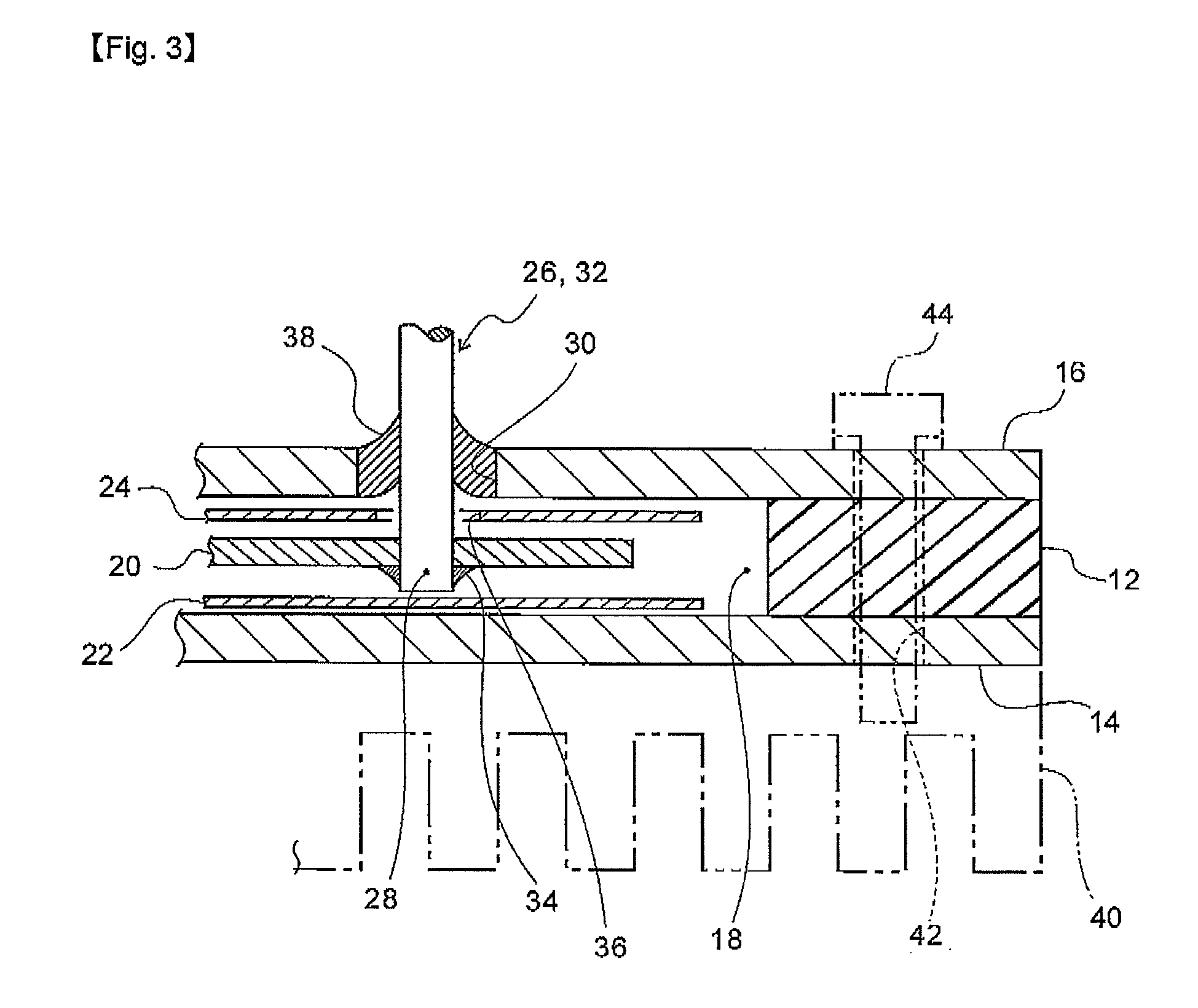Metal foil resistor
a metal foil and resistor technology, applied in resistors, resistor details, electrical devices, etc., can solve problems such as metal foil strain or distortion, and achieve the effects of reducing the number of control factors, preventing any strain or distortion of metal foil, and facilitating design
- Summary
- Abstract
- Description
- Claims
- Application Information
AI Technical Summary
Benefits of technology
Problems solved by technology
Method used
Image
Examples
first embodiment
[0053]The present invention will be described hereinafter in detail in accordance with a standard resistor to which one embodiment of the present invention has been applied with reference to FIGS. 1 to 4.
[0054]In these figures, reference numeral 10 is a package made of a metal and constituted by superimposing a quadrangular frame 12 on a bottom cover 14 and a top cover 16 so that they are brought into close contact with each other and fixed. Accordingly, in the package 10, there is formed a flattened space having a height equal to a thickness of the frame 12, which serves as a resistor accommodation space or chamber 18 (FIG. 3).
[0055]This package 10 contains a metal foil resistive element 20 constituted of a metal foil in which a resistance circuit pattern is formed and which is electrically insulated from the package 10. In this embodiment, insulator films 22, 24 are superimposed on opposite surfaces of the metal foil resistive element 20, and installed in the resistor accommodatio...
second embodiment
[0066]FIG. 5 is an exploded enlarged sectional view of the vicinity of a relay terminal connecting portion in another embodiment. In this embodiment, a relay terminal insertion hole 30A is formed in a frame 12A of a package 10A in a horizontal direction (direction perpendicular to a thickness direction). After a relay terminal 26A is passed through the insertion hole 30A, the insertion hole 30A is sealed with a resin or glass. A flat inner end 28A of the relay terminal 26A is superimposed on and connected to an electrode of a metal foil resistor 20A.
[0067]This resistive element 20A and the inner end 28A are sandwiched between the insulator films 22A and 24A, and a bottom cover 14A and a top cover 16A are overlaid on the frame 12A to hermetically seal the resistive element 20A and the inner end 28A.
third embodiment
[0068]FIG. 6 is a sectional view of the vicinity of a relay terminal connecting portion in still another embodiment, and FIG. 7 is an exploded view of FIG. 6. In a package 10B of this embodiment, one end 14B′ of a bottom cover 14B is protruded outwardly from a frame 12B. And conductive pads 50, 52 are formed on the surface of the protruded portion 14B′ and in a resistor accommodation space 18B positioned inside of the frame 12B, respectively. These pads 50, 52 are connected to each other by an inner layered circuit 54 of the bottom cover 14B. The conductive pads 50, 52 and the inner layered circuit 54 can be prepared in a technique similar to that of a known printed wiring board.
[0069]A metal foil resistive element 20B is soldered to the conductive pad 52. In this soldering, for example, solder plating, solder ball, solder paste or the like may be supplied to the surface of the conductive pad 52 beforehand, and an electrode of the resistive element 20B may be pressed and heated on t...
PUM
 Login to View More
Login to View More Abstract
Description
Claims
Application Information
 Login to View More
Login to View More - R&D
- Intellectual Property
- Life Sciences
- Materials
- Tech Scout
- Unparalleled Data Quality
- Higher Quality Content
- 60% Fewer Hallucinations
Browse by: Latest US Patents, China's latest patents, Technical Efficacy Thesaurus, Application Domain, Technology Topic, Popular Technical Reports.
© 2025 PatSnap. All rights reserved.Legal|Privacy policy|Modern Slavery Act Transparency Statement|Sitemap|About US| Contact US: help@patsnap.com



